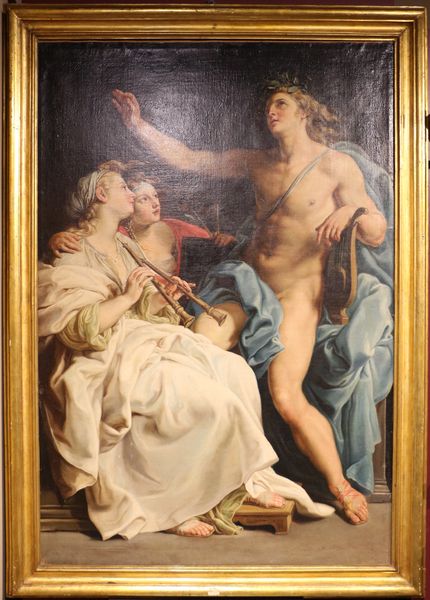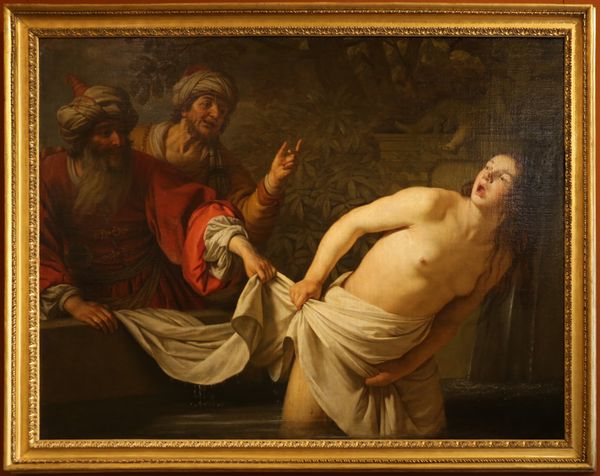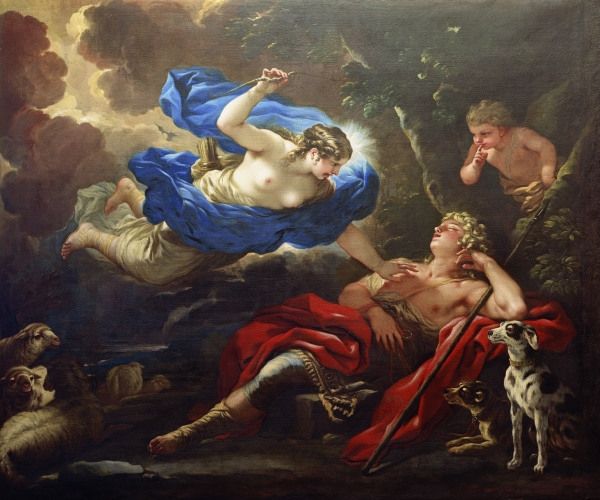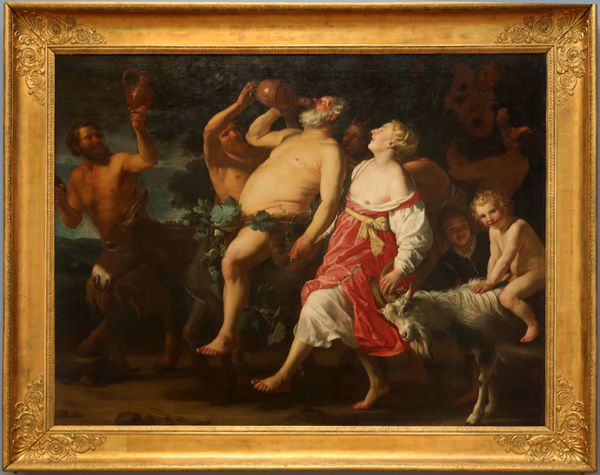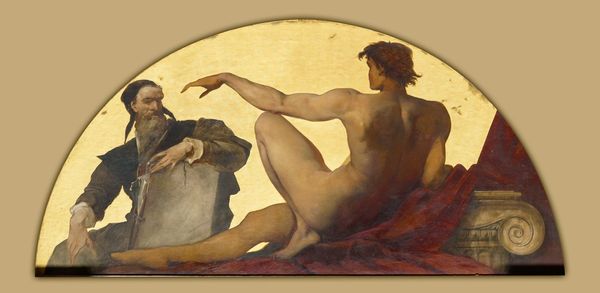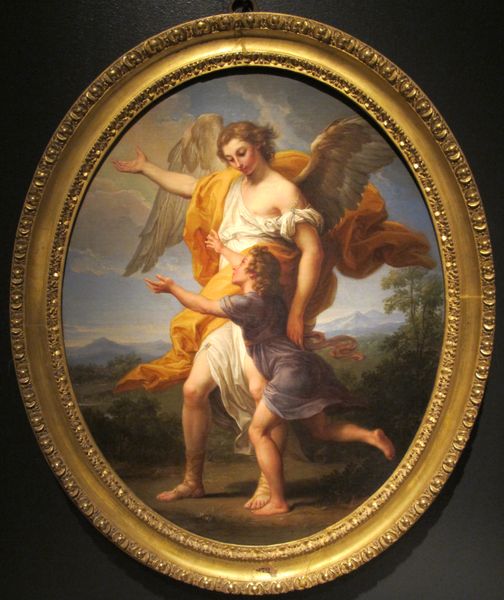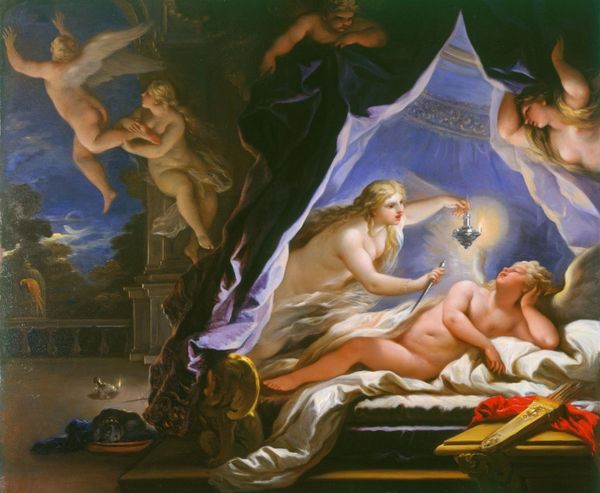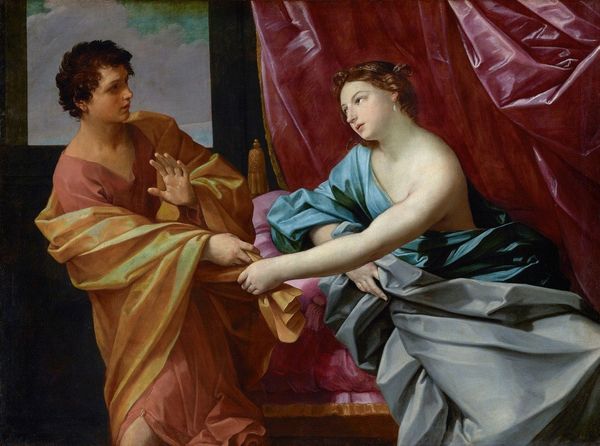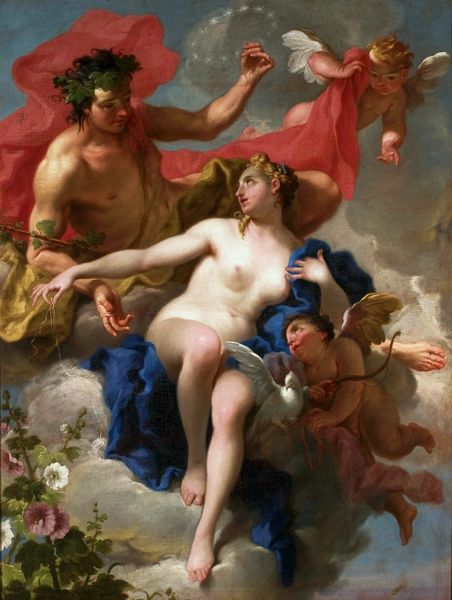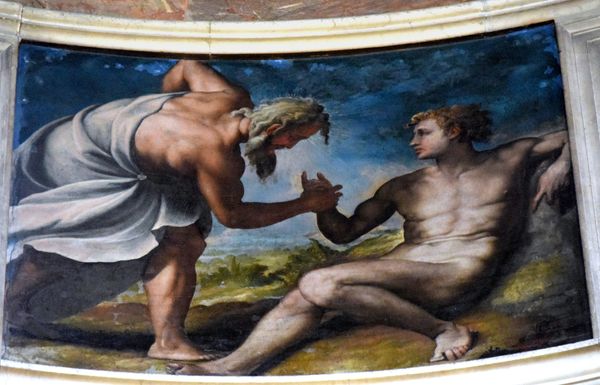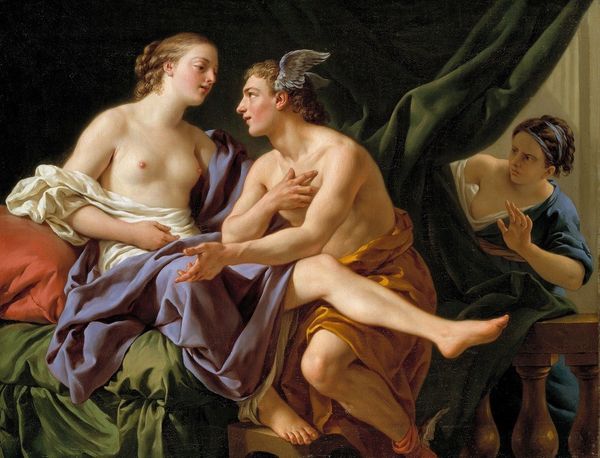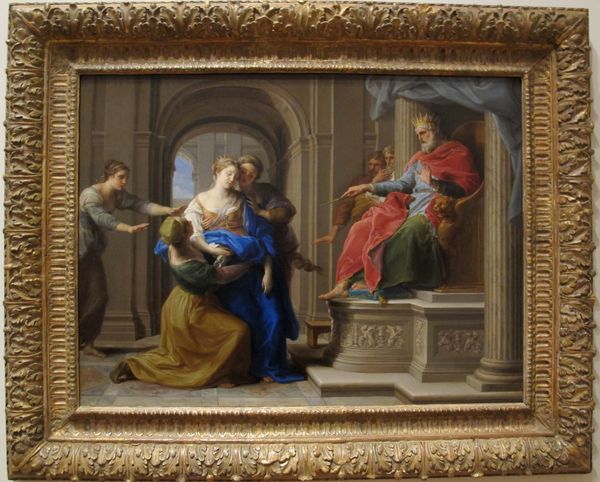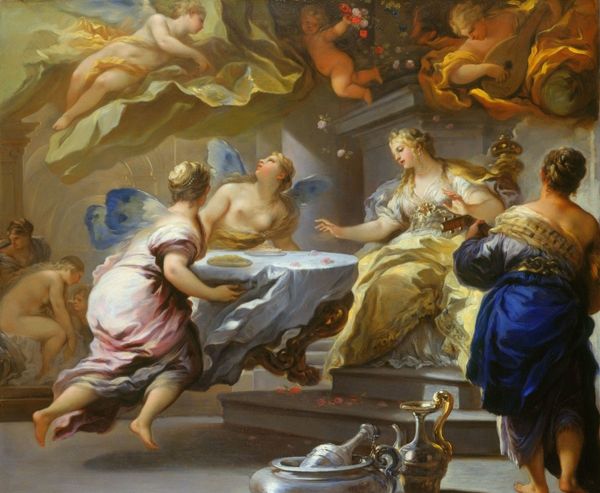
Copyright: Public domain
Curator: This luminous work, titled *Il Tempo Scopre La Verità*, or "Time Unveiling Truth", was completed in 1739 by Pompeo Batoni. It's an oil painting depicting a classic allegorical scene. What strikes you initially? Editor: It's dramatically lit, almost theatrical, isn't it? There's a strong contrast between the exposed Truth, radiating light, and the figure representing Time who seems to be pulling back a dark curtain. You immediately get a sense of unveiling, exposure. Curator: Precisely. The allegorical language employed here serves a critical social function. Consider the socio-political climate in Europe at the time. Batoni created this piece when enlightenment ideals began to permeate the European mindset. How did artists visualize truth during an era defined by scientific revolution? This image, in particular, has much to reveal about artistic strategies deployed when faced with major ideological and political tensions. Editor: From a formal perspective, you see this baroque and rococo fusion manifesting as pure performance. What's really interesting, and slightly uncomfortable, is the figure of Time himself – male, winged, actively participating in unveiling this passively receptive, female Truth. It echoes certain power dynamics that still permeate society. What does it mean when dominant structures determine when and how Truth is “revealed?" Curator: An excellent point. Gender is undeniably a key aspect here. We can deconstruct the symbolism and assess whose gaze, whose intentions, are actually being privileged in this grand "unveiling." The composition itself seems to solidify it, does it not? This performative, perhaps self-congratulatory act. And note how Truth, bathed in light, doesn’t necessarily resist her unveiling. She seems to embody receptivity to temporal authority and progress. It makes one ponder whose vision of ‘truth’ is centered, whose gaze holds prominence. Editor: Exactly. These visual narratives shaped perceptions. Analyzing its visual rhetoric helps us decode these images and understand how art not only reflected but also actively participated in propagating prevailing ideologies. Batoni might've been illustrating some common platitudes of his time. And we should certainly reflect on that, historically. Curator: A potent reminder of how art shapes, and is shaped by, societal structures. I thank you for contextualizing that with your insights! Editor: And you, for reminding us how to question seemingly neutral presentations. Thank you!
Comments
No comments
Be the first to comment and join the conversation on the ultimate creative platform.
